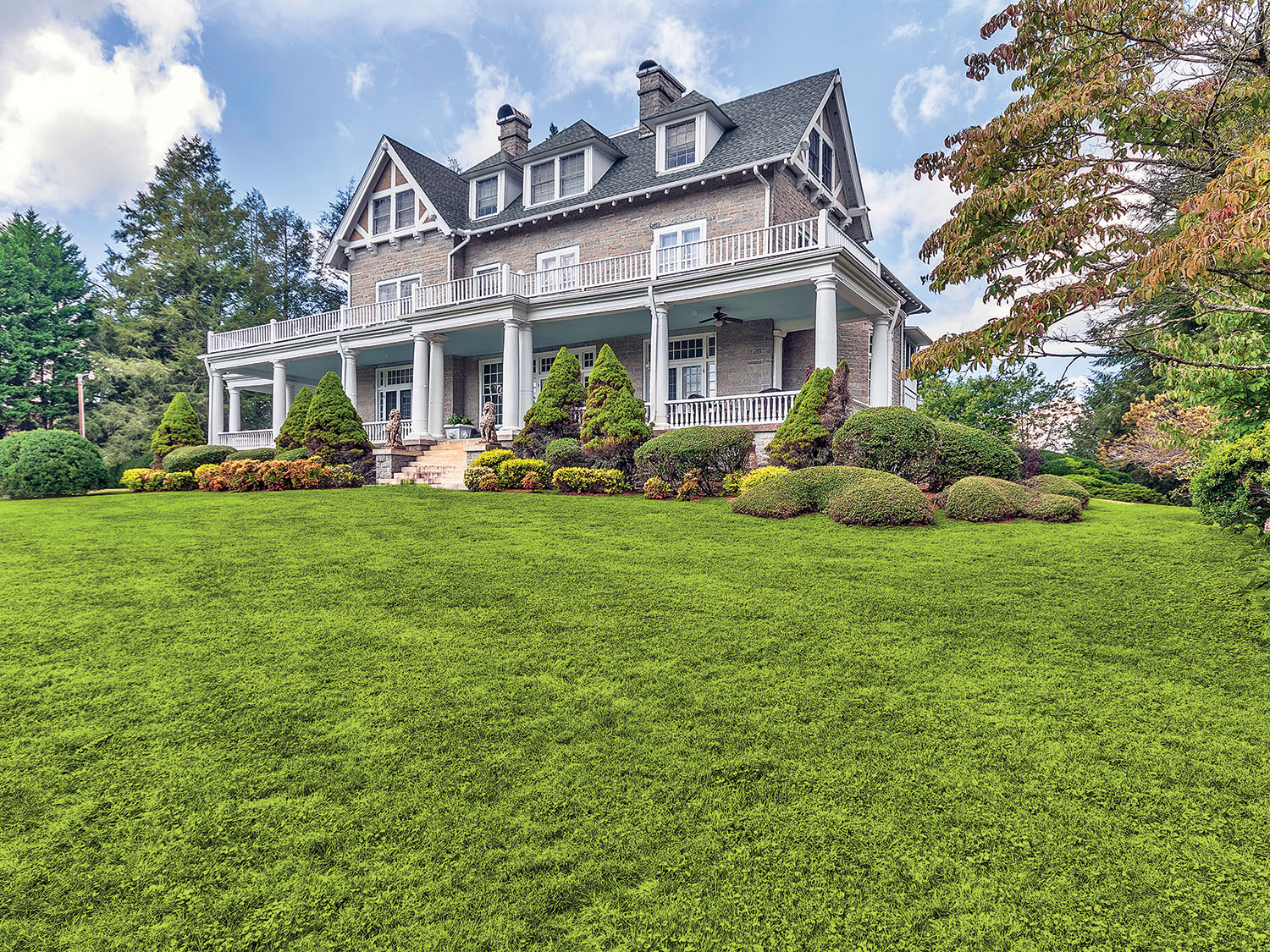
Once a summer playground for wealthy South Carolina Low Country families, the Village of Flat Rock evolved into a charming place defined by a sweet town center; Flat Rock Playhouse, the state theater of North Carolina; and Connemara, the last home of beloved American poet Carl Sandburg and his wife Lilian Steichen, an award-winning goat breeder. The town also happens to be a designated National Historic District, and it packs a unique inventory of historic structures in a small area — from the stunning St. John in the Wilderness Episcopal Church to the impressive Highland Lake Inn and grounds.
The town’s Historic Flat Rock, Inc. and related Cultural Center, housed in a 170-year-old post office, offers an occasional tour of homes. For the first time this year — the group’s 50th anniversary — they’ll open all three of the antebellum mansions that gave Flat Rock its early nickname, “The Little Charleston of the Mountains.” Beaumont, also known as the Johnstone-Hayne house, is Gothic Revival in flavor, fashioned of granite from South Carolina’s Glassy Mountain. Its namesake founder Andrew Johnstone was shot to death in his dining room by a band of Civil War-era bushwhackers, their affiliation unknown. After it was sold several times, the house was purchased by Franklin Brevard Hayne, who ordered a significant remodel in the early 20th century, resulting in notable changes and a landscaping overhaul with sunken gardens. The professionals on his payroll were significant: Beaumont’s redesign was conceived by Biltmore House chief architect Richard Sharp Smith, and the landscaping piece was overseen by another major maverick, Frederick Law Olmsted.
Mountain Lodge, circa 1827, is the oldest of the estates. It exudes simple sophistication, and, through new ownership, was recently brought back from complete neglect-induced ruin. Another of Charleston’s wealthy rice planters, and one of the first of the Lowcountry’s summer exiles, Charles Baring, founded the mansion. He and his wife also founded St. John in the Wilderness; they used it as their private chapel and later donated it to North Carolina’s Episcopal Diocese.

The grandest of the structures, Saluda Cottages, is a stately home built on the old Saluda Path, now Little River Road. (The plural name is a mystery but probably had to do with outbuildings.) The home was erected by Count Joseph Marie Gabriel St. Xavier de Choiseul, a cousin of King Louis Philippe XV and a consul to Charleston and Savannah, in 1836. Despite its aristocratic founder, the original house was a plainer farmhouse style; like Beaumont, it, too, received a significant redesign, this one occurred in the 1880s courtesy of then-owner General Rudolph Siegling, editor of Charleston’s Post & Courier. An ode to Second French Empire grandeur, the special features include an elegant porte-cochère — the Victorian world’s answer to the garage — and an overall commanding symmetry. (See page 88 for a feature story on the home.)
For half a century, Historic Flat Rock has helped owners apply for historic preservation easements to save these homes. Rising president Victoria Flanagan notes that all proceeds from tours go “right back into our work.”
